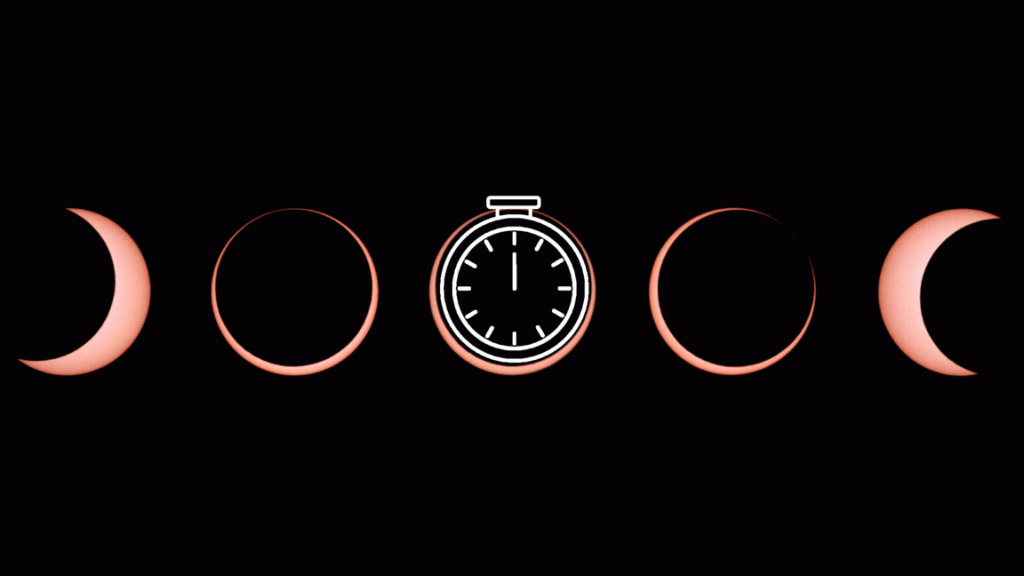
How long will the annular solar eclipse last on Oct. 14? (Image Credit: Space.com)
The annular solar eclipse on Oct. 14 is one of the most anticipated astronomical events of the year, with good reason.
Crossing eight U.S. states from Oregon to Texas before moving across the Gulf of Mexico and over Mexico, Guatemala, Belize, Honduras, Nicaragua, Costa Rica, Panama, Colombia and Brazil, the ‘ring of fire’ annular solar eclipse will be visible to millions of people.
For those situated on the path of annularity (the areas from which the ‘ring of fire’ can be seen), from beginning to end, the solar eclipse will last — on average — about two and a half hours in total. This is broken down into about 1.5 hours of partial solar eclipse, four to five minutes of annular ‘ring of fire’ solar eclipse and then about another 1.5 hours of partial solar eclipse, according to the eclipse guide site The Great American Eclipse.
How long the ‘ring of fire’ portion of the solar eclipse will last during the solar eclipse will vary depending on your viewing location. The closer you are to the centerline of the path of annularity, the longer you will be able to see the ‘ring of fire.’ Durations in the U.S. range from 1 minute 24 seconds in Corvallis, Oregon to 4 minutes 52 seconds in Corpus Christi, Texas, according to The Great American Eclipse.
Related: Where to stand in Texas to see 2 solar eclipses in under 6 months
Where will the annular solar eclipse last the longest?

| Location | Local time of ‘ring of fire’ | Duration of ‘ring of fire’ |
|---|---|---|
| Oregon Dunes, Oregon | 9:15 a.m. PDT | 4 minutes, 29 seconds |
| Crater Lake National Park, Oregon | 9:17 a.m. PDT | 4 minutes, 19 seconds |
| Great Basin National Park, Nevada | 9:24 a.m. PDT | 3 minutes, 46 seconds |
| Bryce Canyon National Park, Utah | 10:27 a.m. MDT | 2 minutes, 31 seconds |
| Canyonlands National Park, Utah | 10:29 a.m. MDT | 2 minutes, 24 seconds |
| Mesa Verde National Park, Colorado | 10:31 a.m. MDT | 2 minutes, 57 seconds |
| Albuquerque, New Mexico | 10:34 a.m. MDT | 4 minutes, 42 seconds |
| Corpus Christi, Texas | 11:55 a.m. CDT | 4 minutes, 52 seconds |
| Edzná Maya archaeological site, Yucatán Peninsula, Mexico | 11:23 a.m. CST | 4 minutes, 32 seconds |
If you’re hoping to catch the eclipse in person, we have several guides to help you plan your eclipse-viewing experience ranging from top tips for planning your trip to which U.S. states the ‘ring of fire’ will be visible from.
Or if you’re unable to catch the eclipse first-hand, there’s no need to worry as there are plenty of solar eclipse livestreams with expert commentary. Our how to watch the annular solar eclipse in person and online guide has rounded up some of the best free livestreams available all in one place.
REMEMBER to NEVER look at the sun directly. To safely view this solar eclipse you must use solar filters at all times. Whether your location will experience a partial solar eclipse or an annular solar eclipse, the dangers are the same. Observers will need to wear solar eclipse glasses, and cameras, telescopes and binoculars must have solar filters placed in front of their lenses at all times.
Our how to observe the sun safely guide tells you everything you need to know about safe solar observations.






